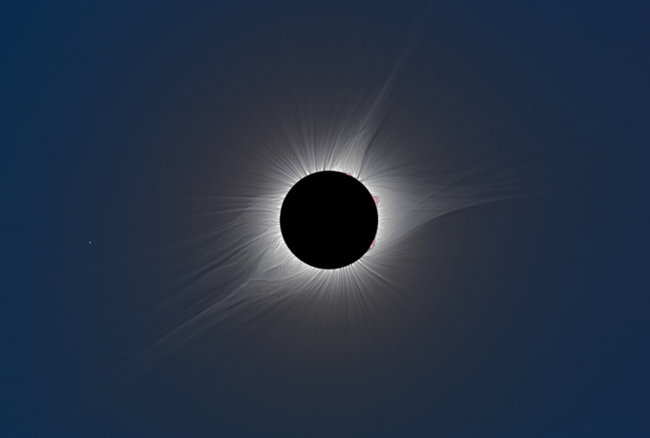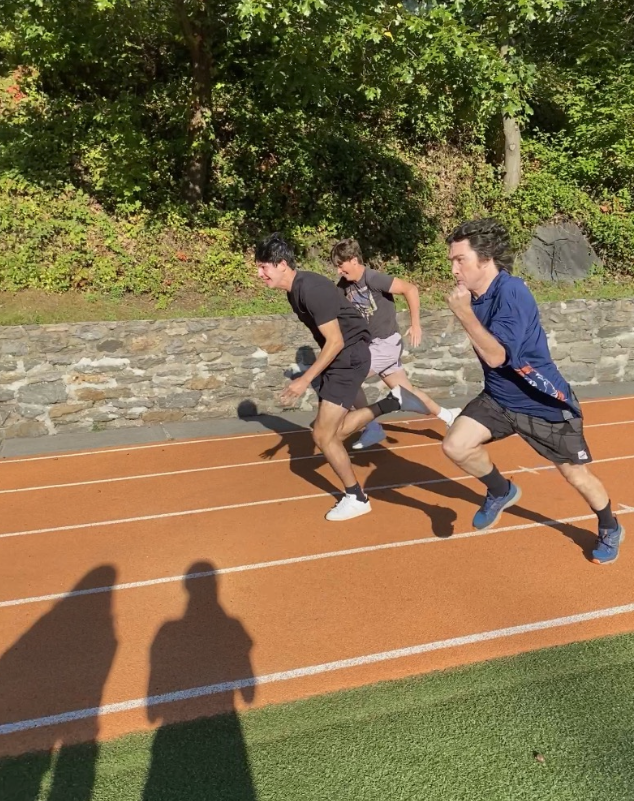On April 8th, 2024, a total solar eclipse will be visible in some parts of the United States, a rare astronomical event. Fieldston’s very own Mr. Wearn witnessed firsthand last year’s annular solar eclipse from one the best vantage points in Utah.
Mr. Wearn has been a teacher in the Physics Department at Fieldston Upper School since 2005. Before joining Fieldston, he spent the first 10 years of his teaching career in Seattle area private schools. Mr. Wearn teaches both regular and intensive physics, in addition to science electives including astronomy and nuclear science. The astronomy elective is a topic near and dear to his heart – a passion that has him traveling around the country to witness specific phenomena involving light related to the orbit of planets in the universe.
When asked about when he first caught the physics bug, Wearn said, “I liked physics since my first class in physics while I was in high school.” Physics combines problem-solving and hands-on experiments to prove ideas, which Mr. Wearn found most intriguing. “Predicting nature’s patterns and learning the rules of the universe,” claims Mr. Wearn, is the most fulfilling part of the physical sciences. Nowadays, Mr. Wearn is most interested in astronomy, cosmology, and more recently interdisciplinary work between chemistry and physics.
Mr. Wearn incorporates real-world scenarios, like movement in sports, while teaching to make lessons a relatable subject matter for his students. Another real-world phenomenon that involves the physics of light is solar and lunar eclipses. A total solar eclipse occurs when the Moon and Sun are in perfect alignment relative the the Earth. According to Mr. Wearn, “The Moon needs to be close enough to the Earth to visibly eclipse the Sun. The key thing about the physics in this scenario is that the Sun and Moon are different sizes: the Sun is really large and the Moon is smaller. Because the Sun is so much farther away, it looks the same size as the Moon. If they align up perfectly (and the Moon is the right distance from Earth) the Moon can eclipse the Sun.” The other key component at play here is the concept of relative motion. The Sun is in a fixed position, while the Earth and Moon have their orbits. These solar eclipses are not common because the orbits of the planets need to cooperate for them to line up perfectly. If one is in the right position on Earth for a 100% solar eclipse, the sky will turn dark for a few minutes and stars can be seen because their light can reach down to us on Earth with the Sun being completely eclipsed. One important thing to remember when staring at an eclipse is to wear specific sunglasses that will block most of the light energy to protect our eyes from damage. When experiencing an eclipse, “our eyes are sensitive equipment, and sometimes too much energy can damage them,” notes Mr. Wearn.
Mr. Wearn will be making the pilgrimage to Rochester, NY, which will have one of the best views in the United States, to see the solar eclipse in April. According to the charts, we Fieldstoinians will be able to see a 99% solar eclipse by the Moon in New York City on April 8th, 2024, from 3:16 pm to 3:29 pm. This will be the next time Fieldstonians will be able to view a total solar eclipse from the United States until the year 2044. But remember, don’t forget those special shades!







